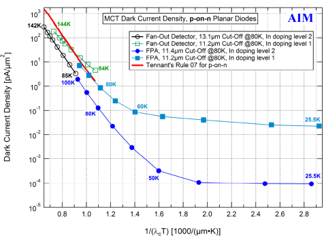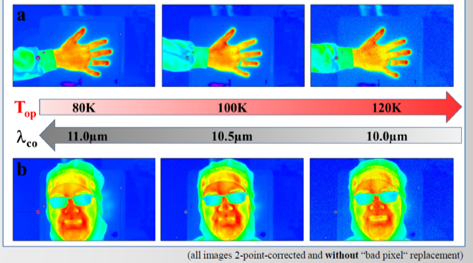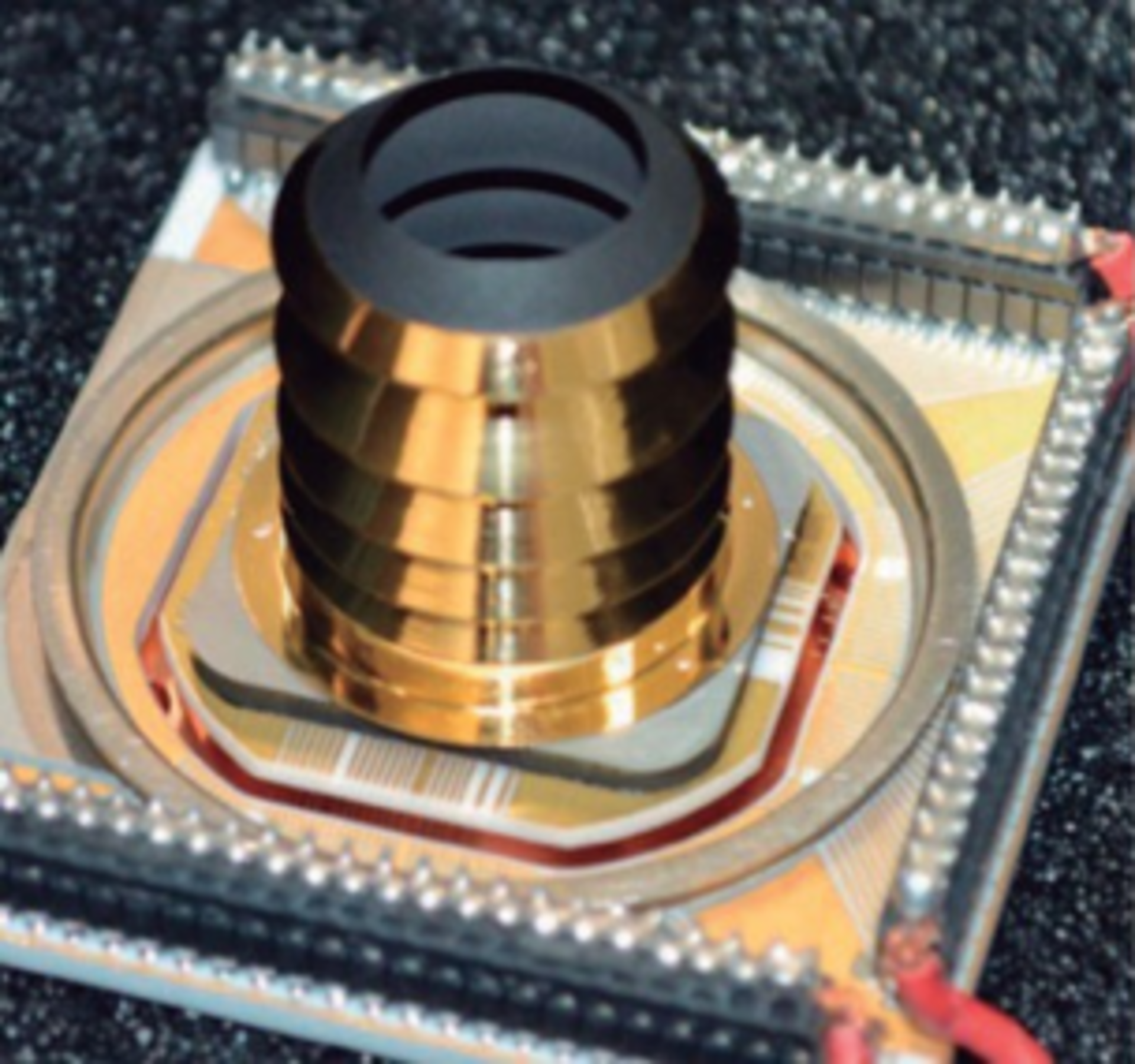Low dark current 2D IR MCT detector
| Programme: | TRP Workplan | Achieved TRL: | 4 |
| Reference: | T116-040MM | Closure: | 2017 |
| Contractor(s): | AIM Infrarot-Module GmbH (DE) | ||
Mercury Cadmium Telluride (MCT) is one of the leading materials used for Infrared (IR) detection purposes. As a consequence, an increasing number of space instruments are equipped with IR channels using MCT detectors. Because of their large dark current, MCT detectors need to be cooled at cryogenic temperature. This imposes major constraints on the instrument complexity. A lower dark current detector would allow either to enhance the instrument performance or to operate the detector at higher temperature, while maintaining the performance unchanged.

Objective(s)
To bring European MCT detector technology to the state of the art represented by the industry-standard “Rule 07” benchmark for dark current in LWIR (11.5µm cut-off) to VLWIR detectors (14.5µm cut-off).
Achievements and status
LWIR and VLWIR LPE-MCT FPAs with outstanding detector performance in dark current, detection efficiency and noise behavior were developed, manufactured and characterized. Environmental testing (e.g. accelerated ageing) was performed and no degradation in behavior was observed. Additional testing at high(er) temperatures was performed under a CCN and it turned out that in particular the p-on-n FPA showed HOT performance which is at unsurpassed by any other LWIR-MCT FPA world-wide. In general the results from the activity were outstanding and exceeded quite some expectations.

Benefits
Regarding “low” operating temperature applications (20-60K) in (V)LWIR the benefits of this technology are: (a) for space applications on board of satellites in astronomy there is a need for low thermal detector dark current and low shot noise for observation of low photon flux scenes. (b) for Earth observation missions, the reduction in cooling requirements for detectors (higher operating temperature for same dark current) relieves burden on satellite power bus.
Next steps
Currently, an ESA TRP follow-up study is on-going, with main objective a low-noise space-grade ROIC optimized for operation with AIM low dark current LWIR detector chips. After the two technologies coalesce they should be qualified for potential use in space applications. Future activity focusing on irradiation campaign (proton, gamma) is strongly advised.





